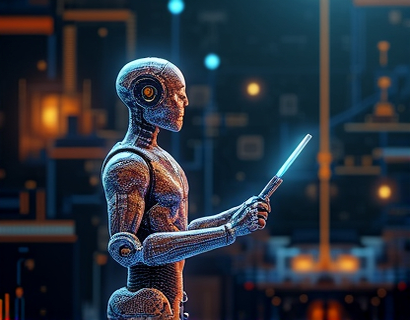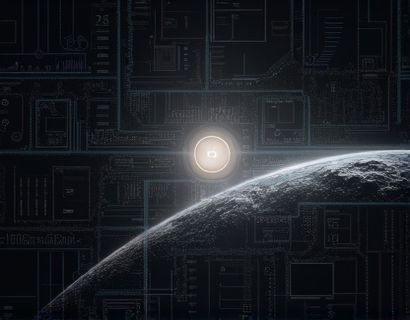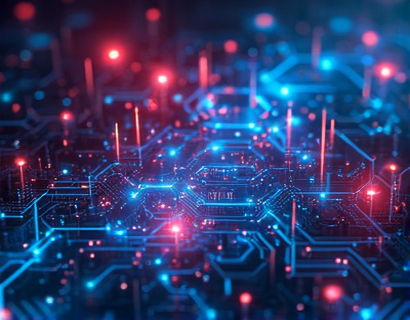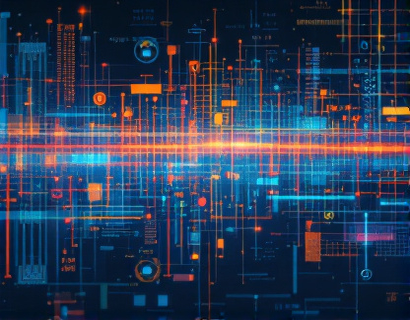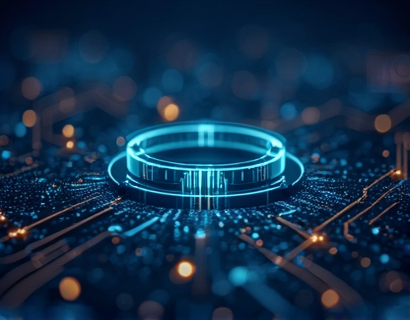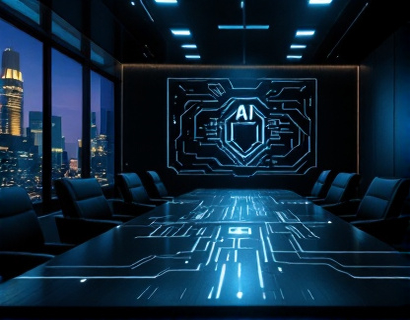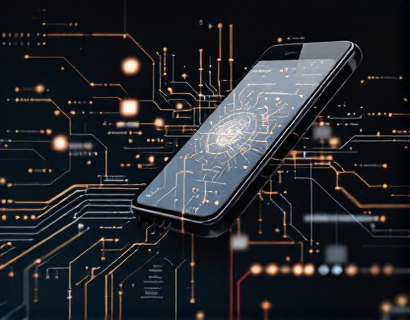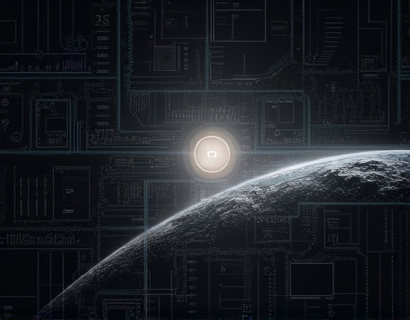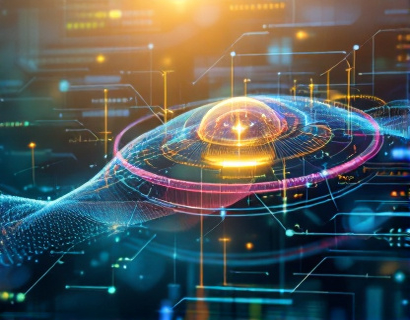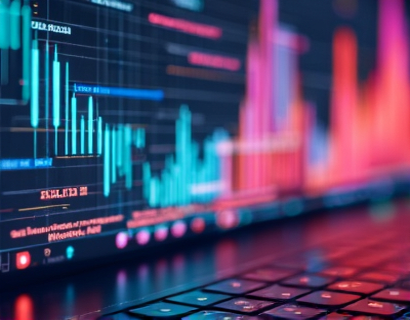Crypto AI Synergy: Revolutionizing Digital App Solutions with Advanced Technology
The integration of cryptocurrency and artificial intelligence (AI) is ushering in a new era of digital innovation, where the boundaries of traditional technology are being redefined. This synergy is not just a convergence of two powerful fields but a transformative force that is revolutionizing how we interact with digital applications. The fusion of blockchain technology and AI is creating more efficient, secure, and seamless user experiences, paving the way for a future where connectivity and innovation know no bounds.
At the heart of this revolution is the unique capability of blockchain to provide a decentralized, transparent, and immutable ledger for transactions. This technology ensures that data is secure and tamper-proof, which is crucial for building trust in digital interactions. On the other hand, AI brings intelligent automation and advanced analytics to the table, enabling systems to learn from data, adapt to new inputs, and perform tasks that traditionally required human intervention.
The combination of these two technologies is leading to the development of smart contracts that are not only executable but also capable of making decisions based on predefined conditions and real-time data analysis. This synergy is particularly impactful in the realm of digital app solutions, where the need for secure, efficient, and intelligent systems is paramount.
Enhanced Security Through Blockchain and AI
One of the most significant benefits of integrating blockchain and AI in digital applications is the enhancement of security. Blockchain's inherent security features, such as cryptographic hashing and consensus mechanisms, ensure that data is protected from unauthorized access and manipulation. AI, with its advanced pattern recognition and anomaly detection capabilities, can further bolster security by identifying and mitigating potential threats in real-time.
For instance, AI-driven security systems can monitor network activity continuously, detecting unusual patterns that may indicate a cyber attack. These systems can then automatically trigger defensive measures, such as isolating affected areas of the network or alerting administrators. This proactive approach to security is a significant improvement over traditional methods, which often rely on predefined rules and manual monitoring.
Moreover, the use of AI in identity verification and access control can significantly reduce the risk of fraud and unauthorized access. By analyzing user behavior and biometric data, AI can authenticate users with a high degree of accuracy, ensuring that only legitimate individuals gain access to sensitive information and services.
Improved Efficiency and Automation
The integration of AI in blockchain-based applications also leads to improved efficiency and automation. Smart contracts, powered by AI, can execute complex operations automatically when certain conditions are met. This reduces the need for intermediaries and manual intervention, streamlining processes and reducing costs.
For example, in supply chain management, AI-enhanced smart contracts can track the movement of goods in real-time, verify the authenticity of products, and ensure compliance with regulatory requirements. When a shipment reaches a certain location or a specific condition is met, the smart contract can automatically trigger the next step in the process, such as payment or inventory update.
In the financial sector, AI-driven blockchain applications can automate trading, risk assessment, and compliance checks. These systems can analyze vast amounts of data quickly and make informed decisions, leading to faster and more accurate transactions. This not only enhances operational efficiency but also improves the overall user experience by reducing delays and errors.
Personalized User Experiences
Another area where the synergy of blockchain and AI is making a significant impact is in creating personalized user experiences. AI algorithms can analyze user data to understand preferences, behaviors, and needs, allowing for tailored recommendations and services. When combined with the transparency and security of blockchain, these personalized experiences can be delivered reliably and securely.
For instance, in content streaming platforms, AI can curate personalized playlists based on viewing history and preferences. Blockchain can ensure that the data used for personalization is secure and that users have control over their information. This not only enhances user satisfaction but also builds trust in the platform.
In the realm of gaming, AI-driven characters and dynamic game environments can provide a more immersive and engaging experience. Blockchain can be used to securely manage in-game assets and transactions, ensuring that players' ownership and achievements are verifiable and protected.
Decentralized Applications and Ecosystems
The convergence of blockchain and AI is also driving the development of decentralized applications (dApps) and ecosystems. These applications run on blockchain networks, leveraging AI to provide intelligent and autonomous functionalities. The decentralized nature of these apps ensures that no single entity has control, promoting fairness and reducing the risk of censorship.
One notable example is decentralized finance (DeFi), where AI-enhanced blockchain platforms offer a range of financial services, including lending, borrowing, and trading, without traditional intermediaries. AI algorithms can optimize trading strategies, assess credit risk, and manage portfolios, making these services more accessible and efficient.
Beyond finance, the healthcare sector is seeing significant advancements with the integration of blockchain and AI. Decentralized health records, powered by AI, can provide secure and seamless access to medical data, enabling better patient care and research. AI can analyze health data to predict disease outbreaks, personalize treatment plans, and improve diagnostic accuracy.
Challenges and Considerations
While the potential of blockchain and AI synergy is vast, there are several challenges and considerations that need to be addressed. One of the primary concerns is scalability. Blockchain networks, especially those using proof-of-work consensus mechanisms, can face performance issues when handling a large volume of transactions. AI algorithms, while powerful, require significant computational resources, which can strain network capabilities.
Another challenge is the regulatory landscape. The intersection of cryptocurrency and AI falls into a gray area in many jurisdictions, leading to uncertainty and potential legal risks. Developers and organizations must navigate these regulations carefully to ensure compliance and foster innovation.
Interoperability is also a critical issue. For the full potential of blockchain and AI to be realized, different systems and platforms need to work together seamlessly. Standardization and collaboration among developers and industry players are essential to overcome this challenge.
Future Prospects
Looking ahead, the future of blockchain and AI synergy is promising. As technology continues to advance, we can expect more sophisticated and integrated solutions that push the boundaries of what is possible. The development of more efficient consensus mechanisms, such as proof-of-stake, and the advancement of AI algorithms will address some of the current challenges, making these technologies more viable for widespread adoption.
The rise of edge computing, which brings computation closer to the source of data, will further enhance the performance and efficiency of blockchain and AI applications. This will be particularly beneficial for real-time applications, such as autonomous vehicles and smart cities, where low latency is crucial.
Moreover, the growing interest in sustainable technology will drive the adoption of energy-efficient blockchain solutions and AI models. This aligns with global efforts to reduce carbon footprints and promote environmental responsibility.
In conclusion, the synergy between cryptocurrency and AI is revolutionizing digital app solutions, offering enhanced security, efficiency, and personalized experiences. As these technologies continue to evolve, they will play a pivotal role in shaping the future of connectivity and innovation, creating a more intelligent and secure digital world.






